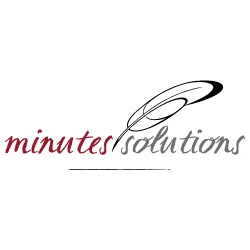Meetings are an essential part of organizational life, whether in corporations, nonprofits, or government agencies. However, the value of a meeting is often lost if there is no accurate record of what was discussed and decided. This is why learning how to take minutes is such a crucial skill. Meeting minutes serve as an official record, ensuring that decisions, action items, and responsibilities are clearly documented and easily accessible for future reference.
Why Learning How to Take Minutes Matters
Understanding how to take minutes is more than just jotting down notes. Good minutes provide:
- Clarity: They summarize discussions and highlight the key decisions.
- Accountability: By recording who is responsible for specific actions, minutes hold participants accountable.
- Continuity: Minutes preserve the history of discussions and decisions, allowing future leaders and team members to understand past actions.
- Legal Protection: In many organizations, knowing how to take minutes correctly is vital because minutes may be reviewed during audits, legal disputes, or compliance checks.
Preparing to Take Minutes
The process of learning how to take minutes begins before the meeting itself. Preparation is key.
- Understand the Agenda: Familiarize yourself with the meeting agenda in advance so you know which items to focus on.
- Know the Participants: Have a list of attendees, their roles, and relevant committees or departments.
- Choose the Right Tools: Decide whether you will use a notebook, laptop, or digital meeting software. Mastering how to take minutes often depends on using tools that allow you to capture and organize information efficiently.
How to Take Minutes During a Meeting
Once the meeting begins, staying organized is essential. Here’s a step-by-step approach:
- Record Basic Details
- Start by noting the date, time, and location of the meeting, as well as the names of attendees and absentees.
- Follow the Agenda
- If you’re learning how to take minutes, always structure your notes around the agenda. This makes it easier to follow discussions and ensures no important point is overlooked.
- Capture Key Points, Not Every Word
- Minutes should not be a transcript. Instead, focus on summarizing major discussions, decisions, and outcomes. For example, note that “the board voted to approve the budget,” rather than recording the entire debate leading to the vote.
- Highlight Action Items
- A critical part of understanding how to take minutes is identifying action items. Be clear about what needs to be done, by whom, and by when.
- Remain Objective
- Minutes must be factual and neutral. Avoid personal opinions or unnecessary details.
After the Meeting: Finalizing the Minutes
Knowing how to take minutes also means understanding the follow-up process. After the meeting:
- Review and Edit: Go through your notes while the discussion is still fresh in your mind. Make sure the minutes are accurate and easy to read.
- Use a Standard Format: Organizations often have templates for minutes. Consistency makes documents easier to understand and archive.
- Get Approval: Draft minutes are usually reviewed and approved at the next meeting. Having a clear approval process is an important part of learning how to take minutes effectively.
- Distribute Promptly: Share the minutes with all relevant stakeholders so that action items can be addressed immediately.
Tips for Mastering How to Take Minutes
- Practice Active Listening: Effective note-taking depends on understanding discussions, not just writing them down.
- Use Abbreviations and Symbols: When learning how to take minutes, create shorthand methods to keep up with fast-paced discussions.
- Stay Neutral: Avoid including subjective comments, even if the discussion becomes heated.
- Leverage Technology: Meeting software can help streamline the process, from capturing notes to securely storing them.
Conclusion
Mastering how to take minutes is an invaluable skill that enhances communication, accountability, and decision-making within any organization. By preparing in advance, focusing on key points during the meeting, and finalizing records promptly, you can create accurate and professional minutes that serve as a lasting reference. Whether you’re a secretary, manager, or team member, knowing how to take minutes effectively ensures that meetings lead to meaningful action and measurable results.


